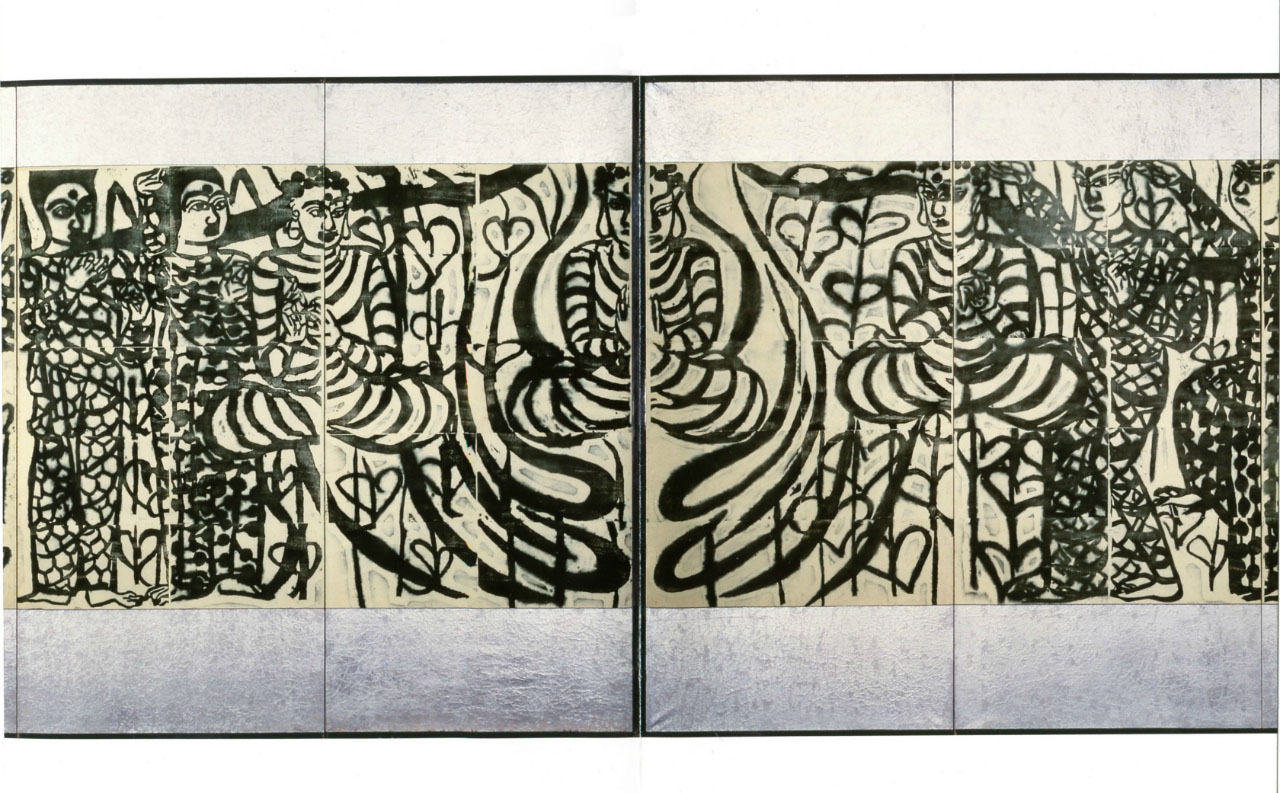It has been just over a year since the Great East Japan Earthquake occurred, and to commemorate the disaster in a show of support for the worst-hit areas, the Japan Folk Crafts Museum's "Tohoku Crafts and Shiko Munakata" is featuring crafts and art from the Tohoku region of northern Japan.
Artifacts on show hail from all six of Tohoku's prefectures — Aomori, Akita, Iwate, Miyagi, Yamagata, and Fukushima — and they exemplify the richness of daily life in northern Japan that harks back to its colorful history of powerful regional lords and samurai families. Included are examples of ceramics, metal work, wood crafts and kimonos from the Edo Period (1603-1867) to present day — together reflecting feudal and local traditions, the harsh climate of the region and the combination of beauty and simplicity found in northern-region crafts.
To cope with the cold winter days and nights, Tohoku homes were traditionally designed to have irori (open hearths), above which rustic Nanbu cast-iron kettles were hung, suspended from high ceiling beams. Such kettles are symbolic of the elegance and simplicity of Tohoku handiwork and they embody the beauty and innovative craftsmanship of Japanese ironwork.


















With your current subscription plan you can comment on stories. However, before writing your first comment, please create a display name in the Profile section of your subscriber account page.